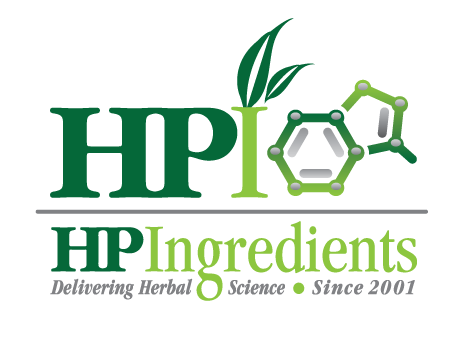BRADENTON, FL — Annie Eng, founder and CEO of HP Ingredients, has announced that the company was issued a US Patent for its signature proprietary compound, ParActin®. The patent US #8,084,495 B2, issued on December 27, 2011, is for the unique work: “Composition of Labdane diterpenes extracted from Andrographis paniculata, useful for the treatment of autoimmune diseases, and Alzheimer Disease by activation for PPAR-Gamma receptors.”
Annie Eng, founder and CEO of HP Ingredients, comments, “This patent validates the extraordinary research supporting viable use of ParActin® in a variety of health issues that necessitate targeted support without other compromising effects such as those experienced typically from more commonly prescribed auto-immune disease drugs and NSAIDs. ParActin’s principle extracted components have been shown to be the first natural PPARy agonist which exerts desirable protective effects in both autoimmunity and Alzheimer’s cases.”
Peroxisome Proliferator Activated Receptor gamma (PPARy) is the key regulator of the immune and inflammatory response. ParActin® was shown in low doses (25 to 30 mg) to stimulate immune response and at high doses (250 mg) to activate PPARy to promote healthy inflammatory response. When PPARy is activated, then NF-kappaB is inhibited. NF-kappaB, which regulates pro-inflammatory cytokines and pro-inflammatory mediators, is activated in asthma and rheumatoid synovium cells, for example. In vitro and in vivo research showed ParActin® inhibited NF-kB activity and reduced significantly the DNA binding of NF-kappaB.
Autoimmune Mechanism
Autoimmune disorders are expressed in a variety of ways: rheumatoid diseases, psoriasis, systemic dermatomyocytis, multiple sclerosis, lupus erythematosis, and exaggerated immune responses to antigens.
Currently, conventional treatment of autoimmune diseases are the use of immunosuppressant drugs (eg, glucocorticoids, calcineurin inhibitors, anti-proliferatives and anti-metabolites) — all which may also reduce the immune system’s healthy functioning, leaving the patient more vulnerable to infections and cancer. Relatedly, the newer therapeutic advances in immune-suppression (eg, anti-CD3 monoclonal antibodies, anti IL-2 receptor monoclonal antibodies and anti-TNF-alpha monoclonal antibodies) exert associated anaphylaxis reactions and the risk of opportunistic infections such as tuberculosis, as well as other deleterious side effects.
According to the patent inventor, Dr Juan Hancke “The present invention is able to diminish the auto-immune response (which characterizes autoimmune diseases and allergies), alleviating the symptoms and the course of these diseases, while maintaining “immunological tolerance,” or a healthy absence of an autoimmune response. We believe that our composition inhibits the synthesis and expression of interferon gamma and interleukin-2, stimulates the PPARy receptor and inhibits the NF kappaB factor. Consequently, we believe these therapeutic compounds in ParActin® selectively reduce over-expression of cytokines, which over-expression is often involved in the pathogenesis of auto-immune diseases.”
Alzheimer’s Mechanism
Alzheimer’s disease (AD) is characterized by the extra cellular deposition of beta-amyloid fibrils within the brain and the activation of microglial cells associated with the amyloid plaque. The activated microglia subsequently secretes a diverse range of inflammatory products. Earlier research (Kitamura et al) assessed the occurrence of PPARy and cyclooxygenase1, cyclooxygenase-2 in normal and AD brains using specific antibodies and found increased expression of these moieties in brains of Alzheimer’s patients. According to Hancke, NSAID s have been shown to be efficacious in reducing the incidence and risk of AD and in delaying disease progression. NSAIDS are PPARy agonists, and research by Combs et al, demonstrated that NSAIDS inhibited the beta-amyloid stimulated secretion of inflammatory products by micoglia and monocytes. PPARy agonists were shown to inhibit the beta-amyloid-stimulated expression of the genes for interleukin-6 and tumor necrosis factor-a and the expression of COX-2.
Until now, concluded Hancke, “there are no antecedents of PPARy agonist compounds isolated from medicinal plants. Whereas, this new composition is able to reduce the pro-inflammatory cytokines production that are increased in autoimmune and neurodegenerative diseases. Additionally, the composition of the present invention has low toxicity, and does not exhibit any harmful side effects.”
Says Eng, “ParActin®, now with this patent, may give our brand marketer clients a distinct competitive edge in the brain health and joint support supplement market sectors.”
About HP Ingredients
HP Ingredients is a fast growing innovative nutraceutical company focused on bringing science based and patented natural remedies to the nutraceutical industry. HP Ingredients is dedicated to providing science based natural health solutions that are effective in supporting the most common chronic conditions affecting our lifestyle. Heart disease, diabetes, obesity, low testosterone and low energy are conditions that have become far too common. We work closely with team of scientists from around the world to bring you LJ100® Standardized Eurycoma Longifolia Extract (22% Bioactive Eurypeptides) for men’s health and sport nutrition; ParActin® – the first PPAR agonist to the market, effective for brain health, joint health, and minor pain management; Bergamonte®, a science based nutraceutical for metabolic syndrome, cholesterol & blood glucose control, and weight management; and Maqui SuperberryTM the highest antioxidant superfruit. Most of pour scientists have been awarded several worldwide patents for their innovative works.


